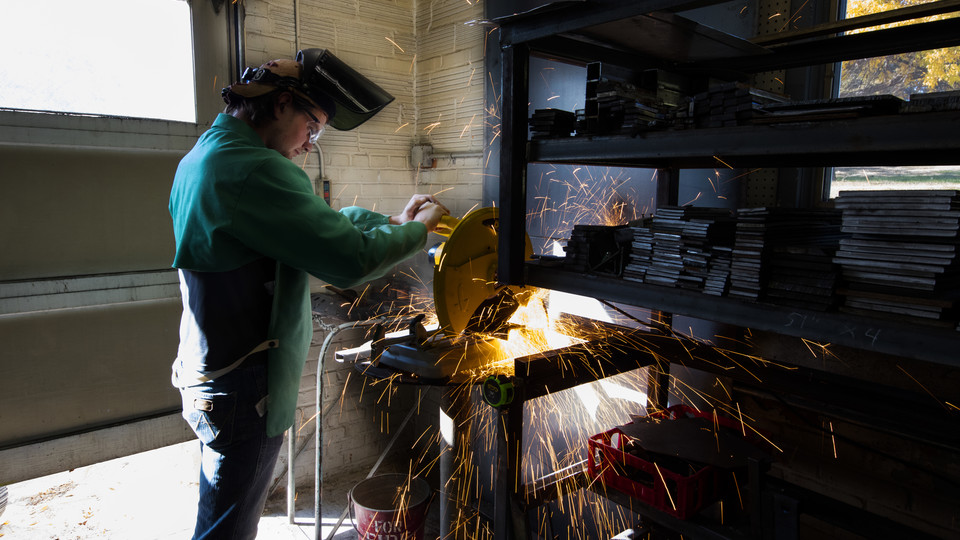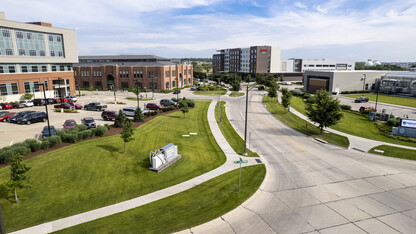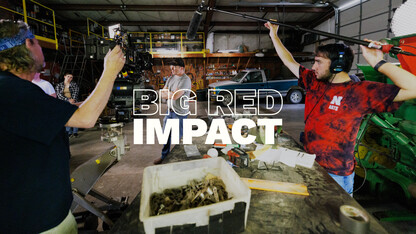· 3 min read
Strong industrial sector to boost Nebraska economy

Thanks to an assist from a stronger industrial sector, Nebraska will record solid economic growth through 2020 — though the state’s farm economy will continue to limp along.
The manufacturing, construction and service industries will lead the way in adding jobs and expanding the state’s economy, according to the new long-term forecast from the University of Nebraska-Lincoln’s Bureau of Business Research and the Nebraska Business Forecast Council.
This will also raise non-farm income in the state. Non-farm income will grow between 3.6 and 3.8 percent each year, according to Eric Thompson, economist and director of the Bureau of Business Research.
“This growth is sufficient to exceed inflation and population growth, meaning real per capita income in Nebraska will grow from 2018 to 2020,” Thompson said.
Manufacturing in Nebraska is experiencing its strongest growth since the Great Recession of 2008, and the forecast predicts the manufacturing sector will add 2,800 jobs over the next three years. Non-durable goods manufacturing will add most of those jobs, augmented by a new poultry facility slated to open in Fremont in 2019.
Thompson and his colleagues predict that durable goods manufacturing will expand more slowly because of a sluggish farm economy and a skilled worker shortage.
“In particular, implement manufacturers will be affected by weak domestic demand due to stagnant farm incomes,” Thompson said.
With continued population growth and tax dollars being allocated to fix state infrastructure, including the recent increase in the gasoline tax to fix state roadways, the construction industry is expected to add 3,200 jobs through 2020.
Residential construction will be strongest in Omaha and Lincoln, but also in growing micropolitan areas such as Grand Island, Kearney and Fremont. These factors, along with a growing office space sector, will support increased construction activity.
Nebraska’s largest employer, the services sector, will add between 4,800 and 6,100 jobs each year, and will account for more than half of overall Nebraska job growth during the forecast period.
Thompson said health care employment will grow the most at 1.3 to 1.5 percent, boosted by population and income growth, as well as an aging populace. Professional and business services, as well as the hospitality segment, will also grow more than 1 percent each year.
“Real income growth is supporting leisure spending,” Thompson said.
Farm income is expected to lag, especially in 2018.
Thompson and his fellow economists expect farm income to fall by 6.7 percent this year, attributable to a cut of $430 million in government payments to ag producers.
There will be a rebound though, in 2019 and 2020. Farm income will rise by more than 5 percent each year, as a new federal Farm Bill takes effect and commodity prices remain stable.
Budget challenges at the state level will limit state and local government job growth through 2019. In 2020, 600 federal government jobs will be added as the decennial census takes place.
The full Business in Nebraska economic forecast is available at the Bureau of Business Research website
The Nebraska Business Forecast Council is composed of John Austin, Bureau of Business Research (retired); David Dearmont, Nebraska Department of Economic Development; Chris Decker, Department of Economics, University of Nebraska at Omaha; Scott Hunzeker, Nebraska Department of Labor; Ken Lemke, Nebraska Public Power District; Scott Loseke, Nebraska Public Power District; Brad Lubben, Department of Agricultural Economics at Nebraska; David Rosenbaum, Department of Economics and Bureau of Business Research at Nebraska; HoaPhu Tran, Nebraska Department of Revenue; and Thompson.







